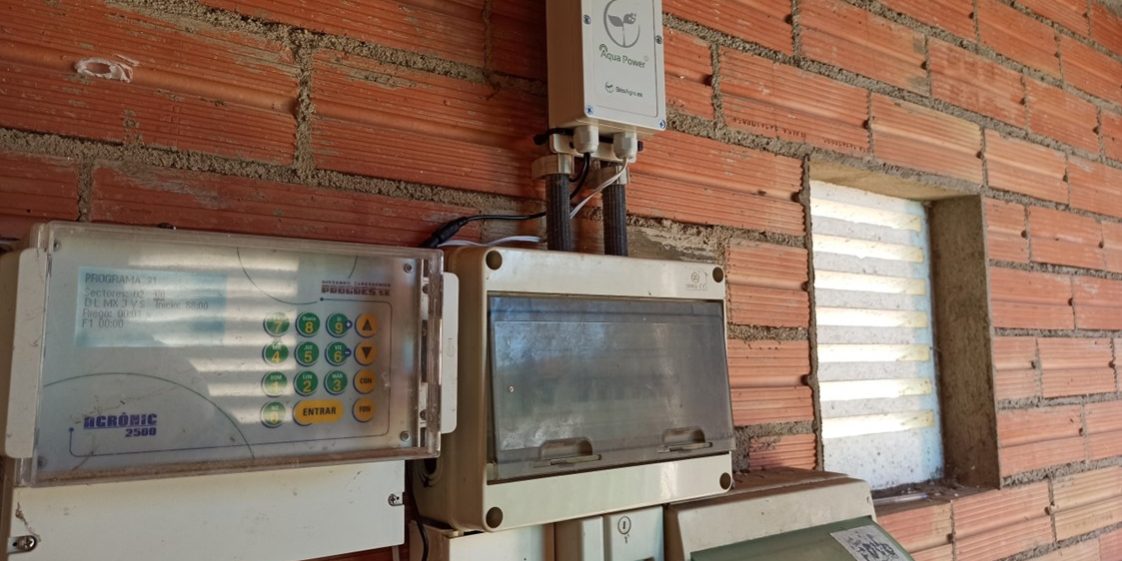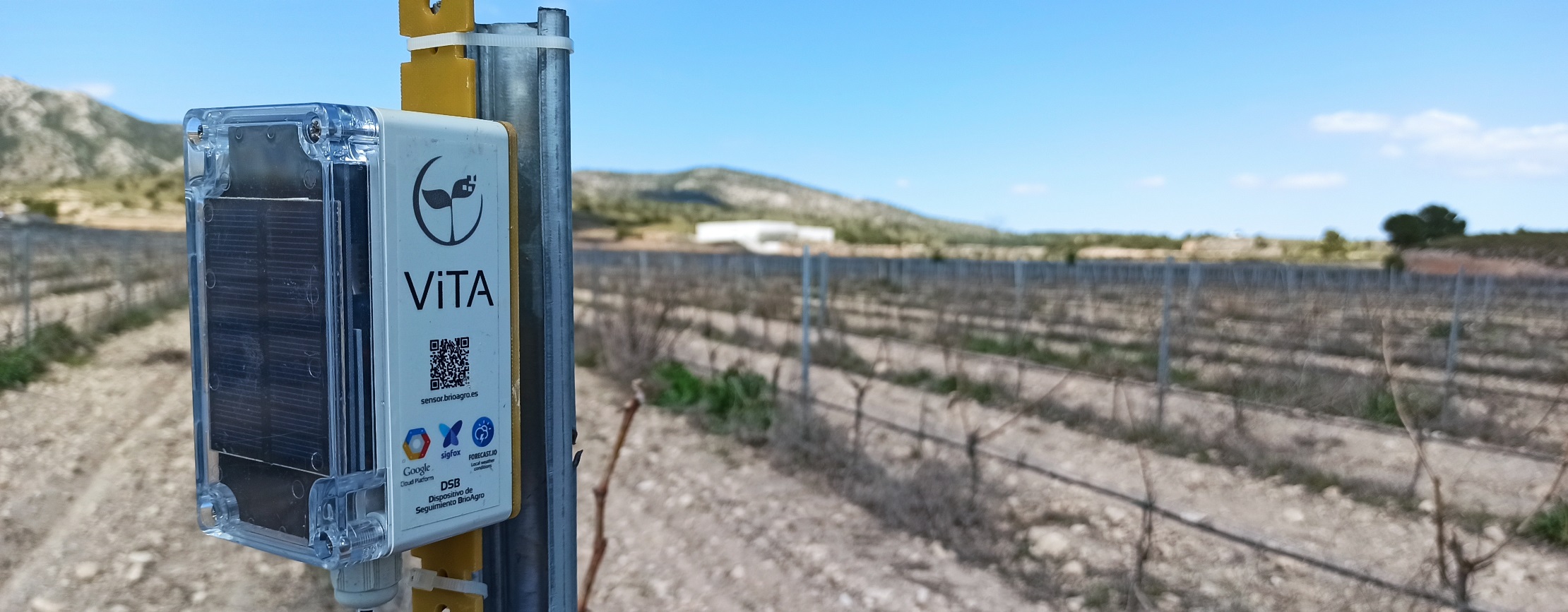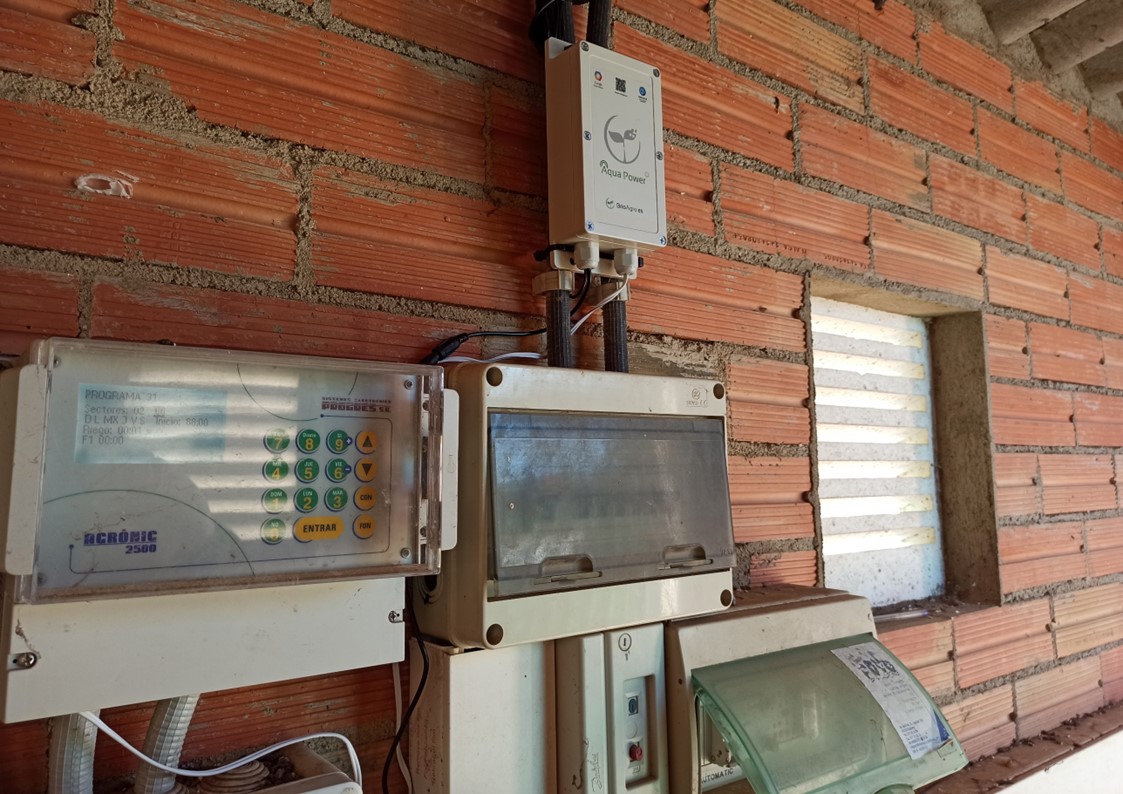On the occasion of the report ‘The countryside tackles water stress with an innovative and rich harvest‘, published on 21/07/2025 in the Economy section of the Spanish newspaper ABC,
We answered the following questions from journalists, which we share here:
How did the AQUA system originate?
The AQUA system emerged as an evolution of the BrioAgro ViTA sensors, designed to monitor the vital signs of crops. This system provides the necessary information to irrigate precisely when the plant needs it. This is BrioAgro’s main differentiator: based on agronomic principles and supported by innovative technology, it interprets the data to inform the farmer of the optimal time to irrigate.
Once when and how much to irrigate are determined, AQUA comes into play: the actuator that executes irrigation at the exact moment.
In summary: first, the ideal time to irrigate is identified and then, with AQUA, irrigation is carried out automatically.
What technology does BrioAgro use?
- Advanced sensors
It uses state-of-the-art analog and SDI-12 sensors. The most relevant for irrigation are capacitive sensors, which measure the amount of water in liters per cubic meter of soil. - Internet of Things (IoT)
It uses robust dataloggers with multiple communication options (2G/3G/4G, LoRa, etc.), powered by small solar panels, to transmit data from the field in real time. - Cloud Computing
Since its foundation, BrioAgro has worked with Google Cloud, where the data is stored and algorithms are applied for analysis and interpretation. - Algorithms and Artificial Intelligence
One of its key differentiators is the soil moisture calibration algorithm, which adapts to the type of crop and soil, and continuously improves through artificial intelligence. - Geolocated Weather Data
It provides real-time climate data and accurate forecasts, tailored to each plot and its specific agronomic needs. - Multispectral Satellite Imagery
It uses Sentinel (low cost) and Planet (high frequency and resolution) satellite images to detect irrigation deficiencies, nutritional or phytosanitary issues, and optimize irrigation in every sector of the farm.
How is the data collected by the sensors managed?
The sensors collect data every few minutes. This data is not stored locally but sent directly to the cloud, where it is processed and stored. The farmer accesses this interpreted information—adapted to their crop and soil type—via their mobile phone or computer.
In which crops is it most used?
In any irrigated crop. We have experience in more than 60 crop families: vegetables, woody crops, fruit trees, cereals, legumes, aromatic plants, tropical crops, nurseries, industrial crops, and those for animal feed—both outdoors and in greenhouses.
We are also currently monitoring points in dryland cooperatives to provide farmers with climate and soil data, even without irrigation.
What benefits does it bring to farmers?
Savings in water, fertilizers, phytosanitary products, labor dedicated to irrigation, and energy. The energy savings are proportional: if 30% water is saved, energy costs associated with pumping are also reduced by 30%.
In trials published by the SECH (Spanish Society of Horticultural Sciences), BrioAgro achieved better results using less water than both expert technicians and FAO recommendations, while also increasing yield by irrigating precisely when the crop needed it.
Is it a major investment?
No. You can start from just €1,500, an investment that pays for itself in just a few months. From there, you can expand with additional features, such as intelligent fertigation (the highest functionality of the AQUA system) or more soil, climate, or crop-specific sensors.
There is also a “Lite” version called Aqua Power, which integrates with the irrigation controller the farmer already has. Only a small amount needs to be added to the €1,500 to have a fully autonomous smart irrigation system. We also offer monthly rental options at an even lower cost for those who want to try it out.
Thanks to the Digital Kit, many small farmers are accessing the system at no initial cost, since this aid covers the €1,500 for farms with fewer than three employees. This program is ending soon.
How important is technology in helping farmers adapt to climate change?
It is crucial. Climate change constantly alters usual patterns: heatwaves, extreme cold, or intense rain require fast, well-informed decisions.
AQUA makes it possible to irrigate exactly when the plant needs it. Sometimes it requires more water—on very hot or windy days—and other times less, when humidity is retained. This precision helps optimize irrigation and protect crops against extreme conditions.





1 Comment